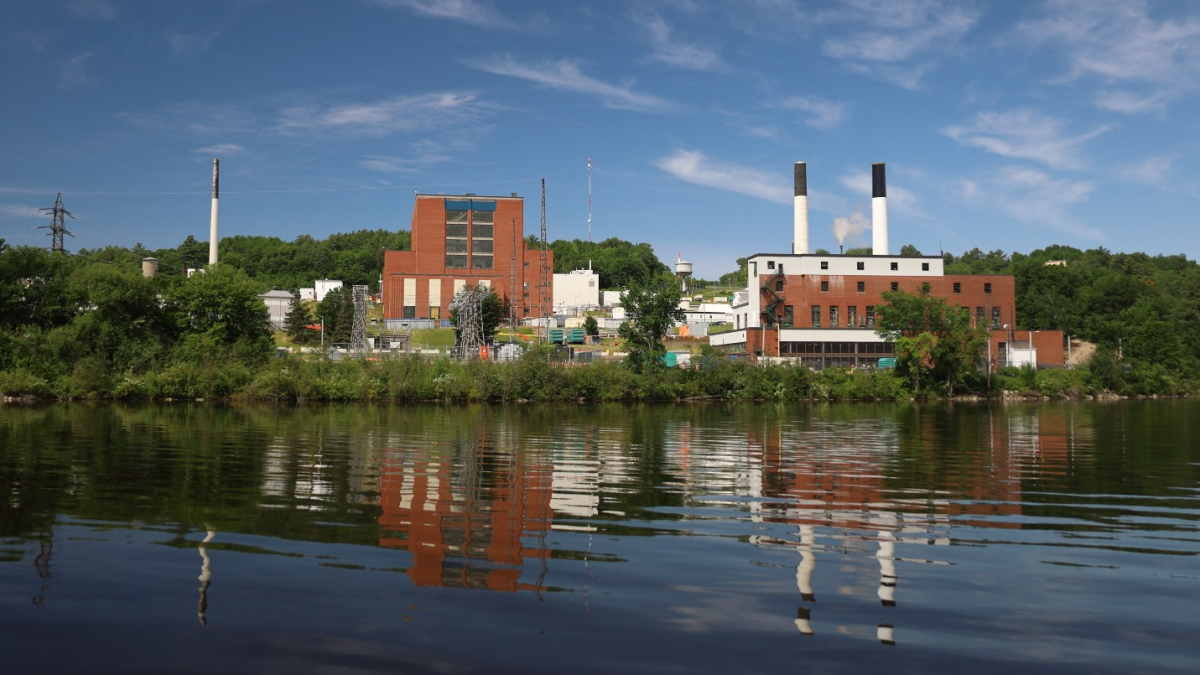Chalk River nuclear waste facility challenged in court, again

Chalk River Laboratories as seen from the middle of the Ottawa River in summer 2022. Photo by Natasha Bulowski
Construction of a radioactive waste mound near the Ottawa River was challenged in federal court last week.
The contentious project would allow Canadian Nuclear Laboratories (CNL) to permanently dispose of one million cubic metres of radioactive waste in a shallow mound about 190 kilometres northwest of Ottawa, as a solution to radioactive waste accumulated since the 1940s as well as waste from future operations. The mound would be known as the Near-Surface Disposal Facility, or NSDF.
On Nov. 19 and 20 Justice Whyte Nowak heard arguments from citizen groups on why the decision by the Canadian Nuclear Safety Commission (CNSC) should be sent back for redetermination.
The judicial review was brought by Concerned Citizens of Renfrew County and Area, Ralliement contre la pollution radioactive and the Canadian Coalition for Nuclear Responsibility.
“We're not here today to argue about whether or not we need a nuclear waste facility,” said Nicholas Pope, the lawyer representing the groups, at the Nov. 19. hearing.
“The reality is, there is nuclear waste at Chalk River, and it needs to be handled as safely as possible. But CNL and the Commission have cut some corners, and this would not be a big deal if we were talking about the compost heap — but this is not compost.”
The CNSC addressed many issues, but “glossed over some key points that have serious implications for public safety,” he said.
The application says the commission’s decision is unreasonable in three key ways. For one, Nicholas Pope, the lawyer representing the groups, argued the commission used the wrong radiation dose limit for exposures once the mound is abandoned. Another key point states CNL didn’t provide all the legally required information, including the origin of packaged radioactive waste destined for the facility. Lastly, the applicants argued the commission didn’t meaningfully grapple with the project's cumulative effects, inadequate waste verification and impact to species at risk.
Canadian Nuclear Laboratories lawyer Jeremy Barretto argued the commission did meaningfully account for central issues and concerns raised by First Nations, citizen groups and experts and that addressing each argument or concern line-by-line in its decision “would just be unworkable.”
“The applicants, in our view, have not met their burden of showing that the decision has serious shortcomings or fundamental gaps,” Barretto said at the Nov. 19 hearing.
This is the second judicial review concerning the approval of the disposal facility, the NSDF. In July, Kebawoek First Nation appeared in federal court to argue CNL — the private consortium responsible for managing the Chalk River nuclear site — did not secure the First Nation’s free, prior and informed consent during the licensing process. The outcome is pending.
A third hearing related to the NSDF is scheduled for Feb. 6 and 7. This application challenges Environment and Climate Change Canada’s decision to issue a permit to destroy species at-risk habitat during construction. It was filed by Kebaowek First Nation, Concerned Citizens, the Canadian Coalition for Nuclear Responsibility and Sierra Club Canada Foundation on Sept. 27.
The longevity of nuclear waste is a key concern. Synthetic material lining the top and bottom of the mound will erode after about 550 years. Institutional controls, like monitoring, will be in place for 300 years but after that there is no guarantee of regulatory checks and balances and, as Pope points out, no guarantee CNL or the commission will still exist thousands of years in the future.
“Four thousand years from now, when there will be no more institutional control, the NSDF will subject the public to radiation doses exceeding the allowable limits for nuclear substances,” Pope said.
Barretto noted that a lot of the radioactive waste slated for disposal in the NSDF is currently sitting in trenches, which was standard practice decades ago but is no longer in line with waste-management practices.
Pope emphasized most of the arguments, if successful, don’t require any physical modifications to the design of the waste facility, and sending the decision back to the commission “does not mean the NSDF is scrapped and the waste stays in trenches.”
Natasha Bulowski / Local Journalism Initiative / Canada’s National Observer






Comments